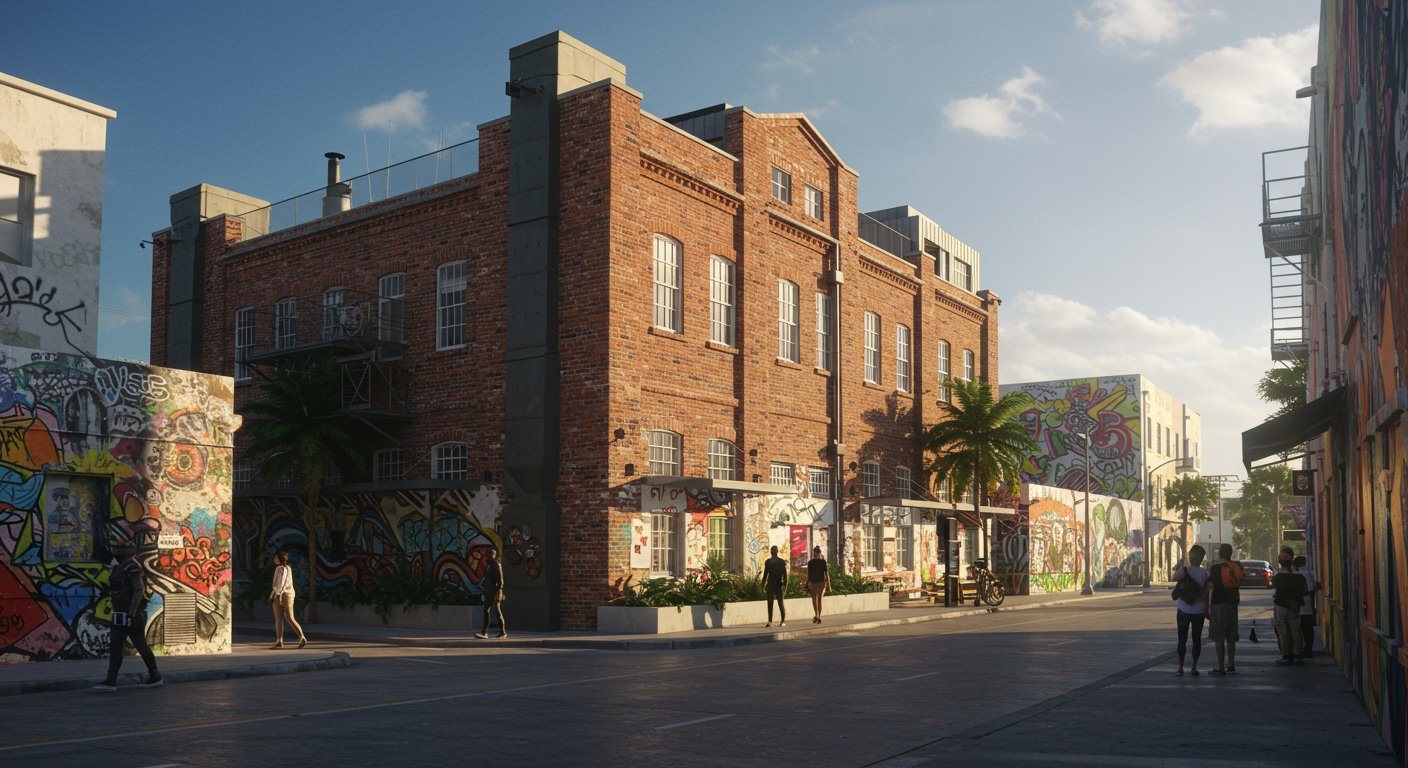Miami, FL – The future of artist housing in Miami’s rapidly evolving Wynwood district is the subject of significant attention following a recent comprehensive report. The report, published by the Miami Herald on June 29, 2025, precisely at 12:17 PM, delves into a proposed plan centered on the historic Bakehouse complex, an anchor institution within the arts neighborhood. The Herald’s analysis of the intricate proposal highlights five key takeaways, offering crucial insights into the potential trajectory of this development and its implications for the local artistic community.
Wynwood has transformed dramatically over the past two decades, evolving from an industrial zone into a global hub for street art and a vibrant cultural destination. This revitalization, largely spurred by artists and creative entrepreneurs, has paradoxically led to escalating property values and rents, presenting a severe challenge to the very community that fueled its rebirth. Securing affordable and sustainable living and working spaces for artists has become a critical concern for policymakers, cultural leaders, and the artists themselves. Initiatives focusing on dedicated artist housing, like the one reportedly planned for the Bakehouse complex, are increasingly viewed as essential tools to combat displacement and preserve the authentic character of the district.
The Challenge of Artist Displacement
The economic success of districts like Wynwood often creates an unintended consequence: the displacement of the original creative class. As galleries, studios, and residential buildings attract investment and higher-paying residents, the cost of living and operating within the area becomes prohibitive for many artists and cultural organizations. This phenomenon threatens to homogenize the neighborhood, potentially diluting the very artistic spirit that made it attractive in the first place. Addressing this challenge requires deliberate planning and investment in retaining the artistic community through mechanisms such as subsidized housing, dedicated workspace, and long-term tenancy protections. The Bakehouse complex, with its established presence and history, presents a compelling site for such an intervention.
The Role of the Bakehouse Complex
The Bakehouse Art Complex, located at 150 NW 24th Street, has long served as a vital non-profit studio space and gallery for Miami artists. Its potential role in a larger artist housing initiative underscores its significance as a cultural landmark and a potential cornerstone for sustainable development within Wynwood. Plans involving such institutions often seek to leverage their existing infrastructure and community ties to create models that are not only economically viable but also deeply integrated into the local arts ecosystem. A development at the Bakehouse could potentially combine residential units with studio space, gallery areas, and community facilities, creating a live-work environment crucial for artists.
Examining the Miami Herald’s Findings: Five Key Takeaways
The Miami Herald’s report on June 29, 2025, published at 12:17 PM, provides a focused examination of the plan for the Bakehouse complex, distilling its key elements into five specific takeaways. While the precise details of these five points were not available in the source summary provided, their enumeration by a distinguished news organization like the Miami Herald indicates the multifaceted nature of the proposal. Typically, such takeaways in journalistic reports of this nature would address various aspects of the plan, potentially including:
* Financing Mechanisms: How the project is intended to be funded, involving potential sources like grants, public subsidies, private investment, or a combination thereof.
* Scope and Scale: The number of housing units, studio spaces, and other facilities proposed, as well as the overall size and footprint of the development.
* Eligibility Criteria: Details on who would qualify for the artist housing, such as income limits, artistic practice verification, or residency requirements.
* Timeline and Phases: The projected schedule for planning, construction, and occupancy, potentially outlining different stages of the development.
* Community Impact and Engagement: How the plan addresses concerns from existing residents, artists, and stakeholders, and mechanisms for ongoing community involvement.
The fact that the Herald has identified precisely five such key points suggests a structured plan with distinct components critical for public and stakeholder understanding. Further detailed analysis would require access to the full Miami Herald article to explore the specific substance behind each of these takeaways.
Broader Implications for Miami’s Arts Scene
The success or failure of initiatives like the proposed Bakehouse complex plan has implications extending beyond Wynwood. Miami’s identity as a global arts city is intrinsically linked to the vitality and presence of its local artists. Providing stable, affordable living and working environments is paramount to retaining talent, fostering creativity, and ensuring the long-term cultural richness of the metropolitan area. The Bakehouse project, if implemented successfully, could serve as a model for similar initiatives in other parts of Miami or inspire alternative approaches to preserving artistic communities in the face of urban development and gentrification pressures.
The focus of the Miami Herald’s report on these five key takeaways underscores the complexity of balancing development goals with the need for cultural preservation and community support. Stakeholders, including artists, developers, local government officials, and community residents, will undoubtedly scrutinize these points as the plan progresses.
In conclusion, the Miami Herald’s report on June 29, 2025, at 12:17 PM, shedding light on the proposed artist housing plan for Wynwood’s Bakehouse complex and outlining five key takeaways, marks a significant moment in the ongoing conversation about the future of arts and culture in Miami. While the specifics of the plan’s components await full public disclosure, the report confirms that a concrete proposal is under serious consideration, with distinct aspects deemed critical enough by the Herald to be highlighted as essential takeaways for understanding its potential impact on Wynwood and Miami’s broader artistic landscape.





